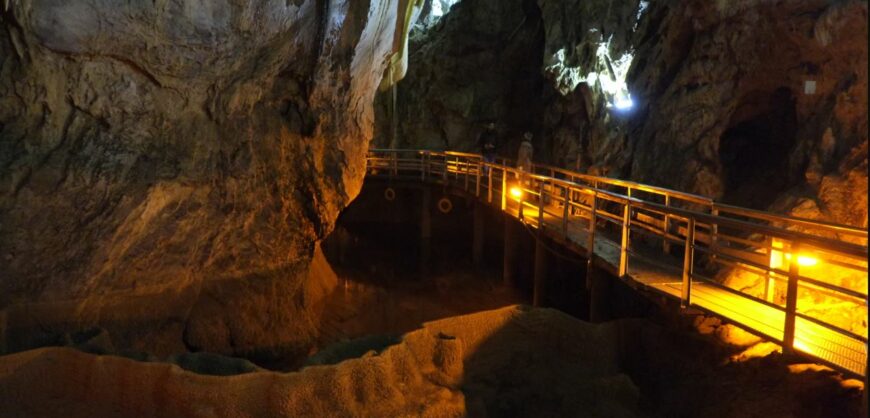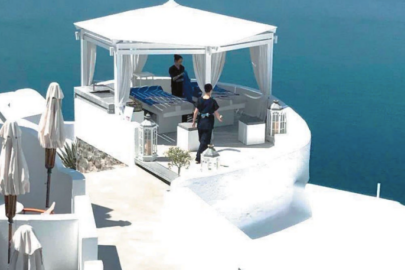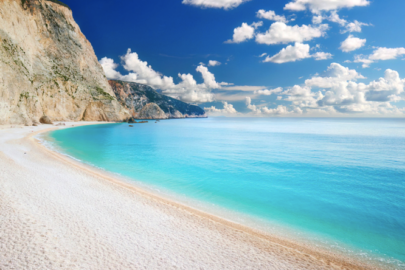Kalavryta, a lush and picturesque alpine town in the north of the Peloponnese, is one of Greece’s most popular autumn-winter destinations, drawing nature lovers, thrill-seekers, and skiers who want to enjoy time away in a beautiful environment.
The mountainous town has plenty to offer its visitors: a rich and interesting history, an enticing cuisine, the Voraikos gorge, a scenic railway route, a ski resort on the slopes of Mount Helmos, and the Cave of the Lakes, formerly called Troupissio.
The Cave of the Lakes, near the village Kastria in the Achaia region (around 17 km from Kalavryta) is known for its impressive succession of cascading terraced green and turquoise lakes on three levels. It is unique in Greece and one of the most extraordinary settings of its kind in the world, where significant finds were discovered tracing back to the Late Neolithic, the Early, Middle, and Late Bronze Ages, and the Early and Middle Helladic periods.
Part of the cave was first discovered in 1964 by villagers from Kastria, while an expedition by the Greek Mountaineering Association, with the participation of cavers from Greece and abroad, took place a few years later. In 1981, the Greek National Tourism Organisation (GNO) commenced excavation works to open up the cave to the public, which happened for the first time in 1990.
also read
The purchasing power of low-wage workers in Greece has decreased by 40%
Chinese rocket is set to tumble uncontrollably back to Earth – We do not know where it will land
Today, a 500-meter section of the cave’s total of 1,980m explored by cavers is open to the public, starting from an entry point that is 3.50 m high and 6.50 m wide. A tunnel that has been excavated leads visitors directly to the cave’s second of three levels, where the lakes at three different levels are incredibly impressive to see. The cave features a total of 13 lakes. The Cave of the Lakes is even more spectacular during winter or spring when there is more water.
source travel.gr








































